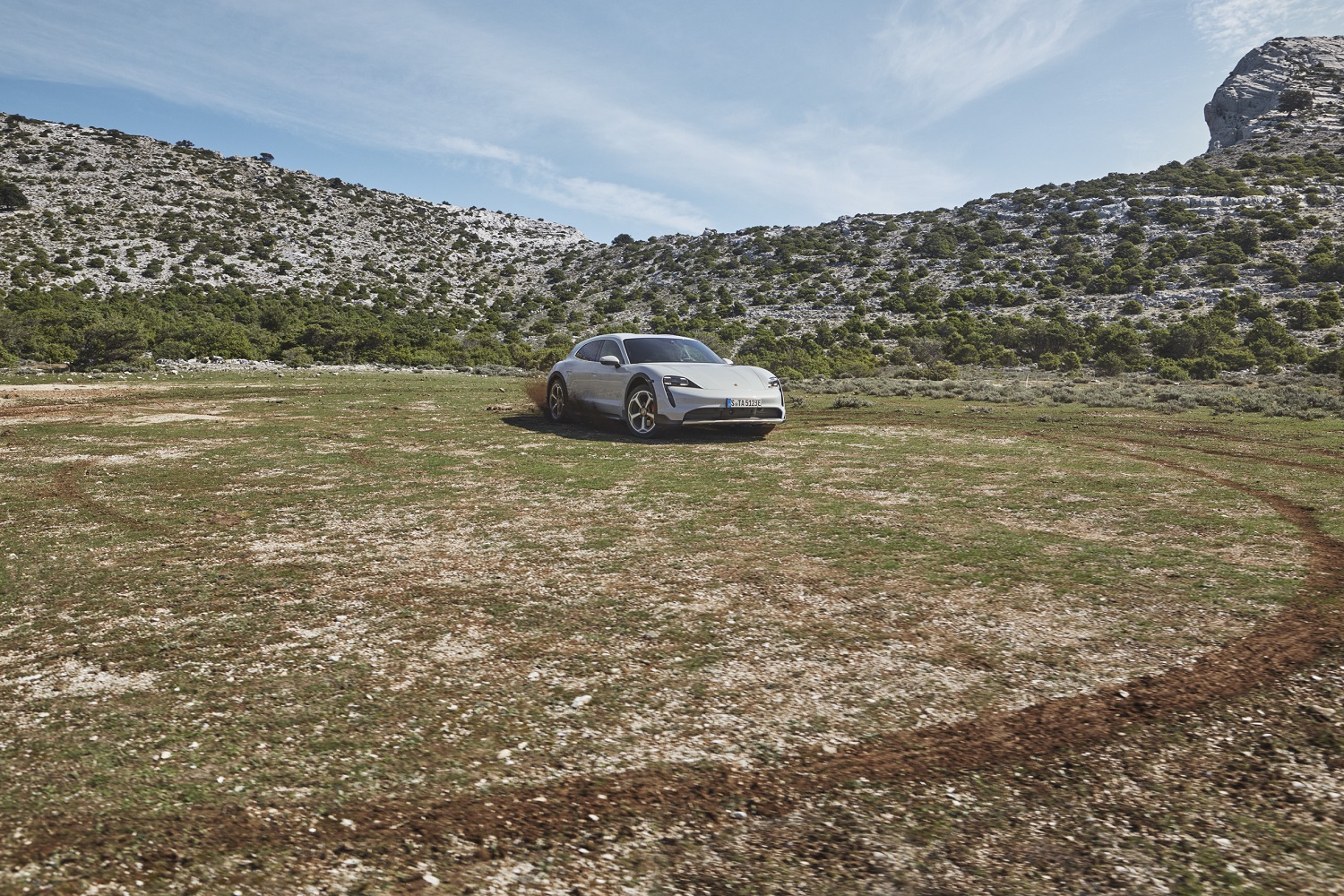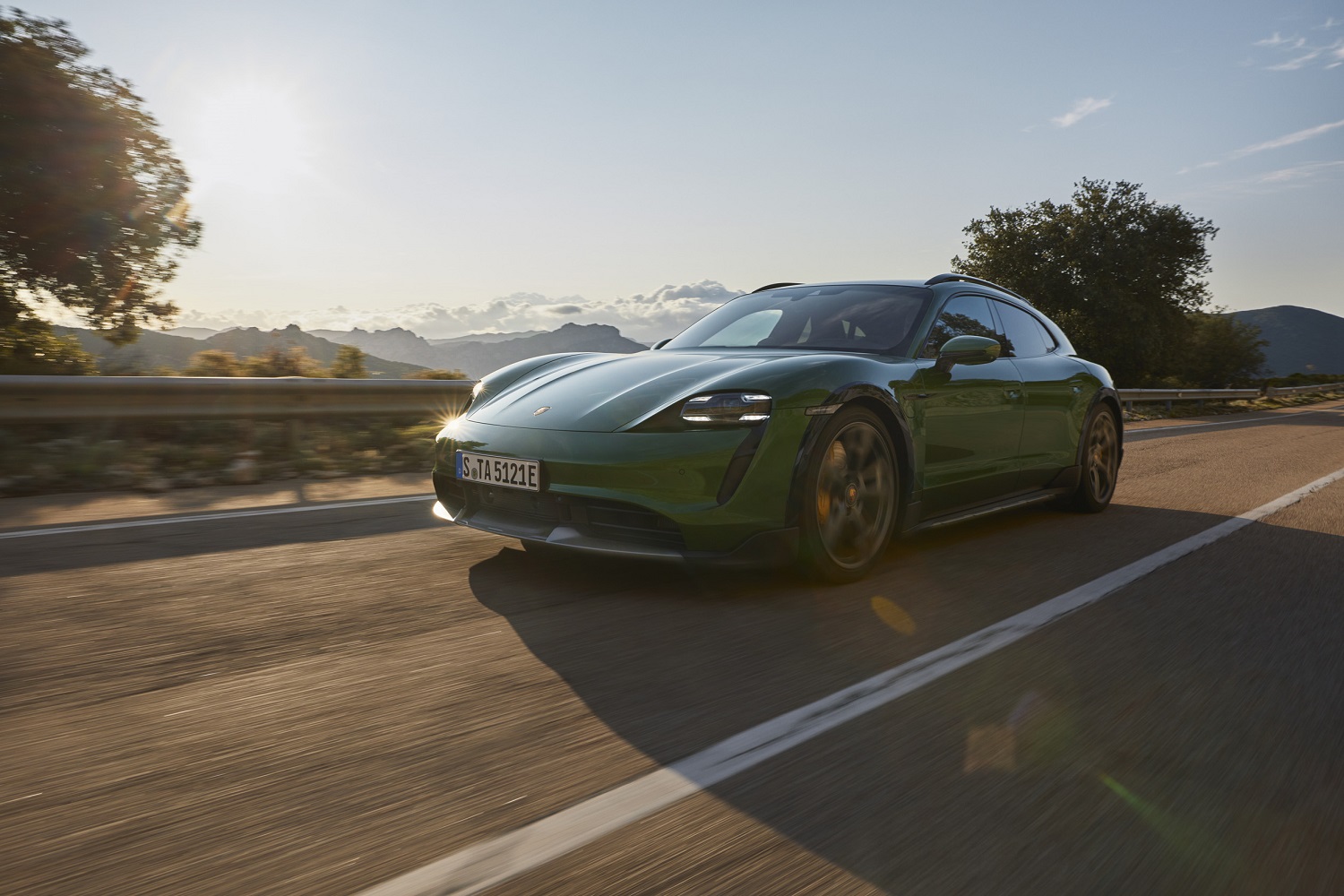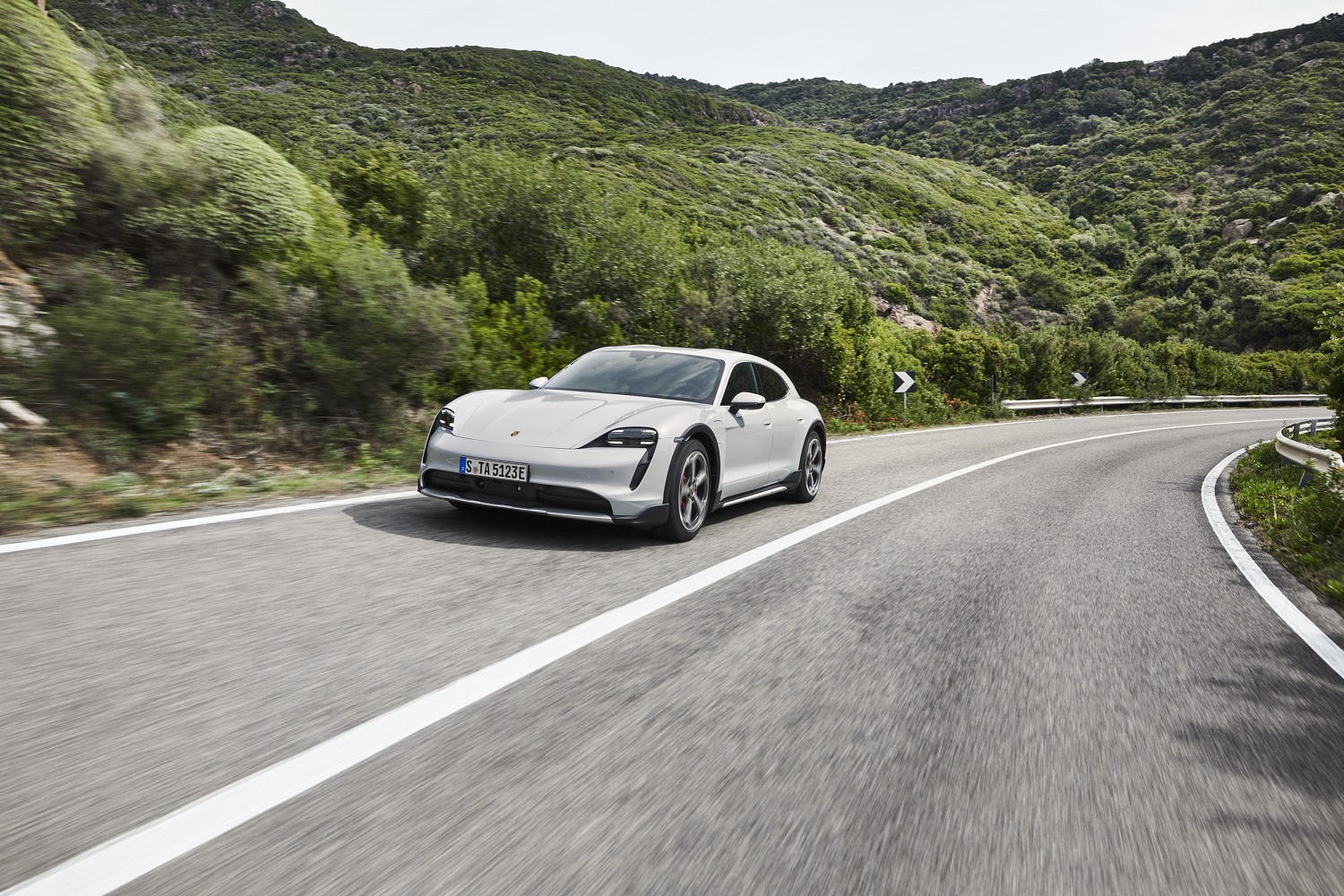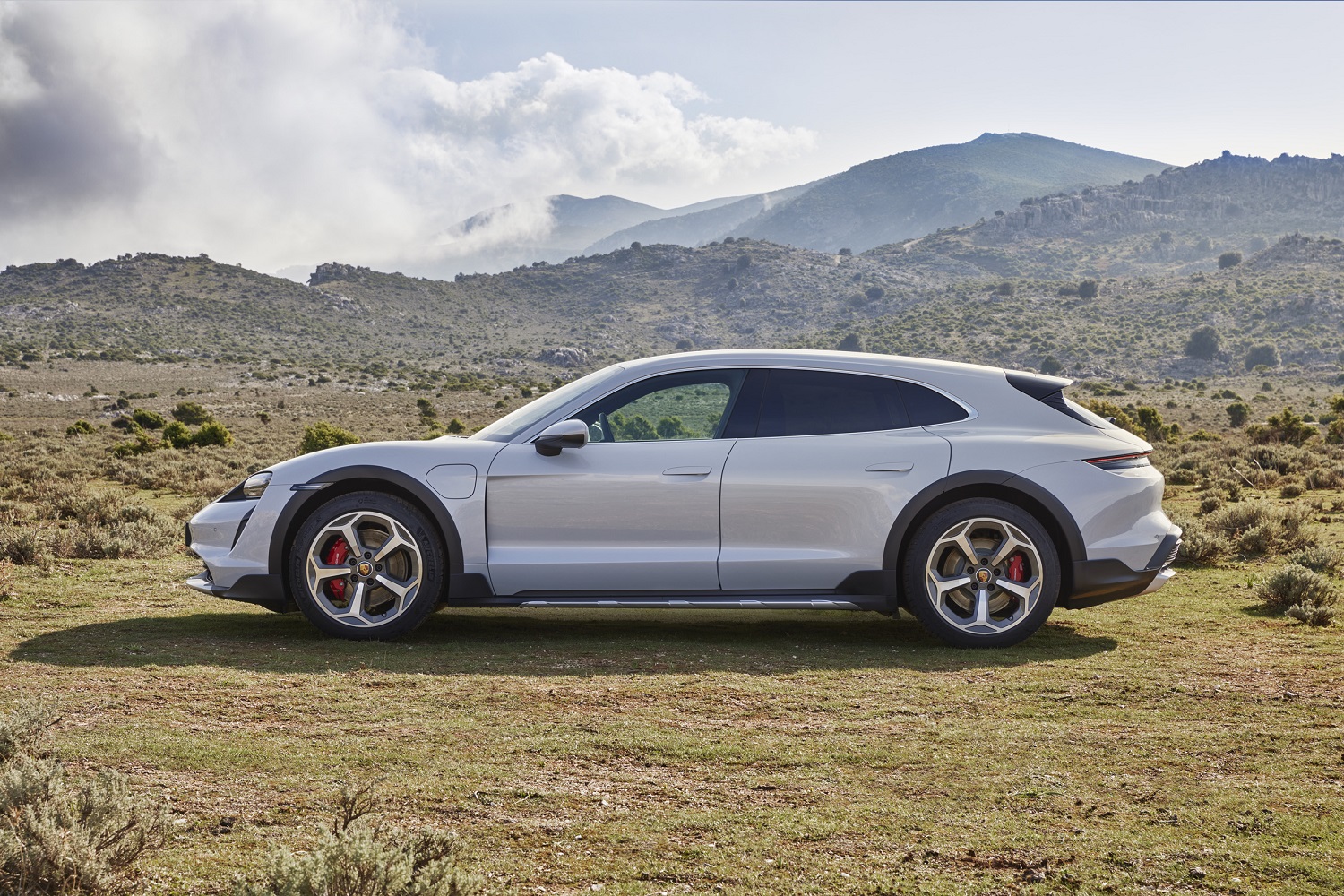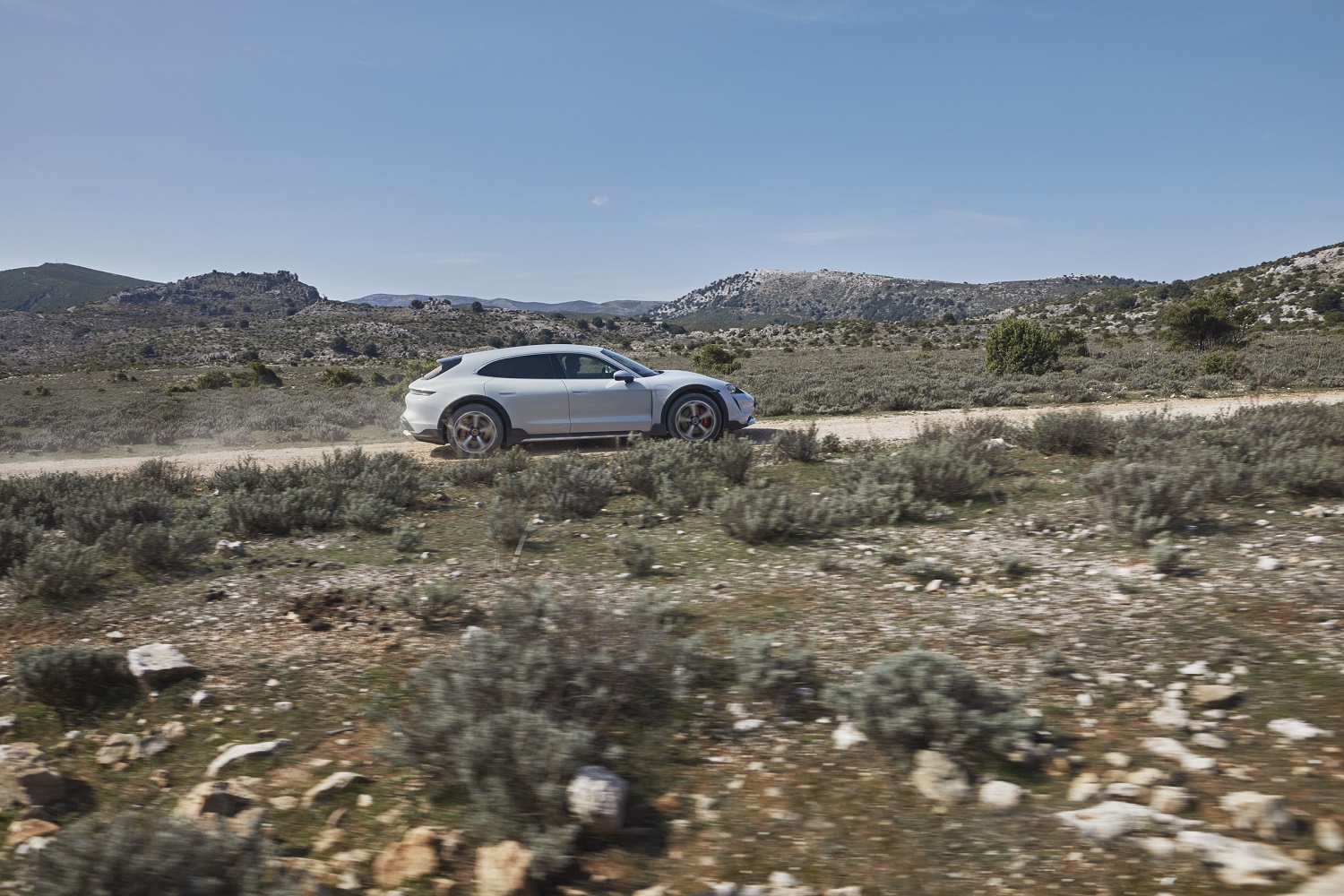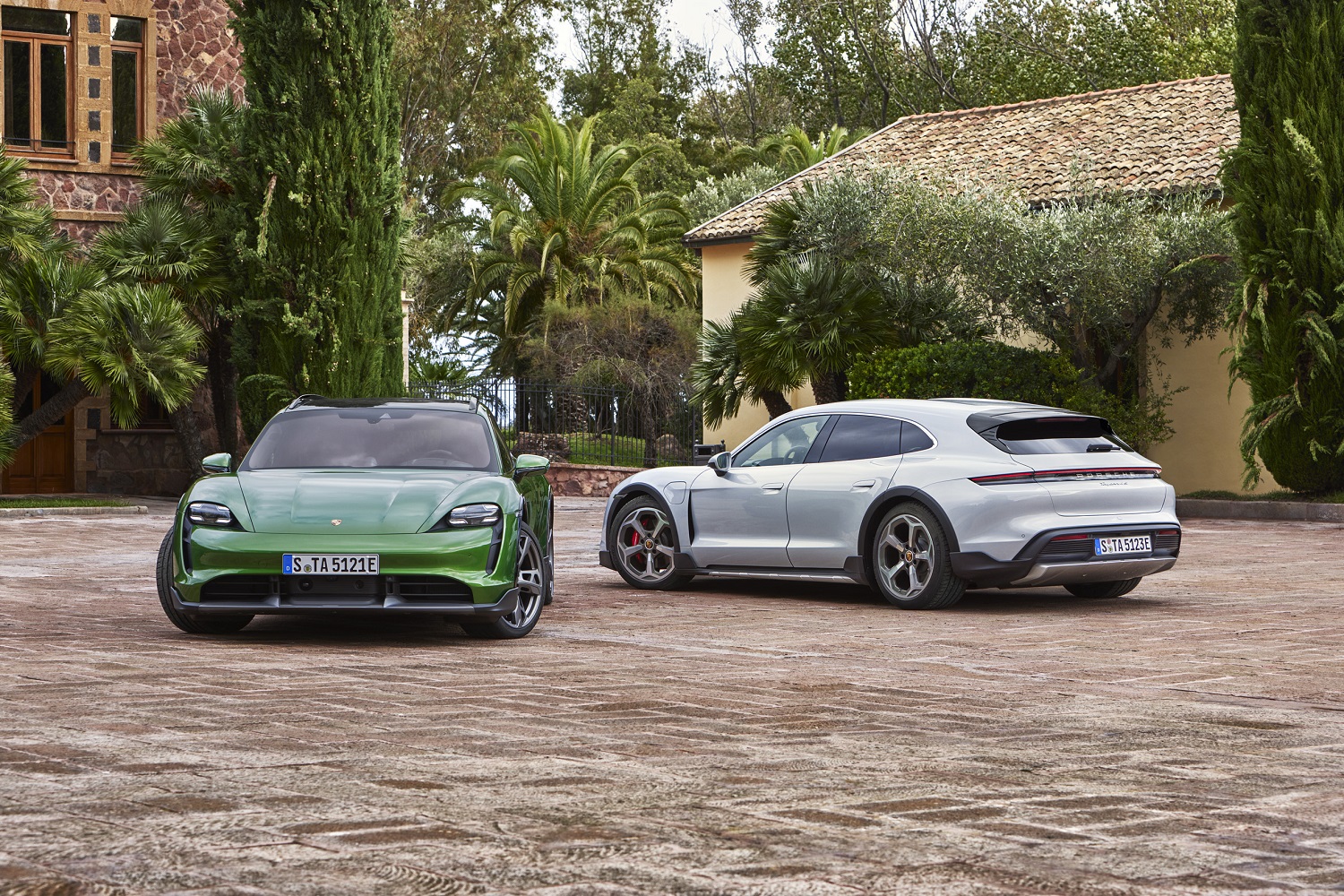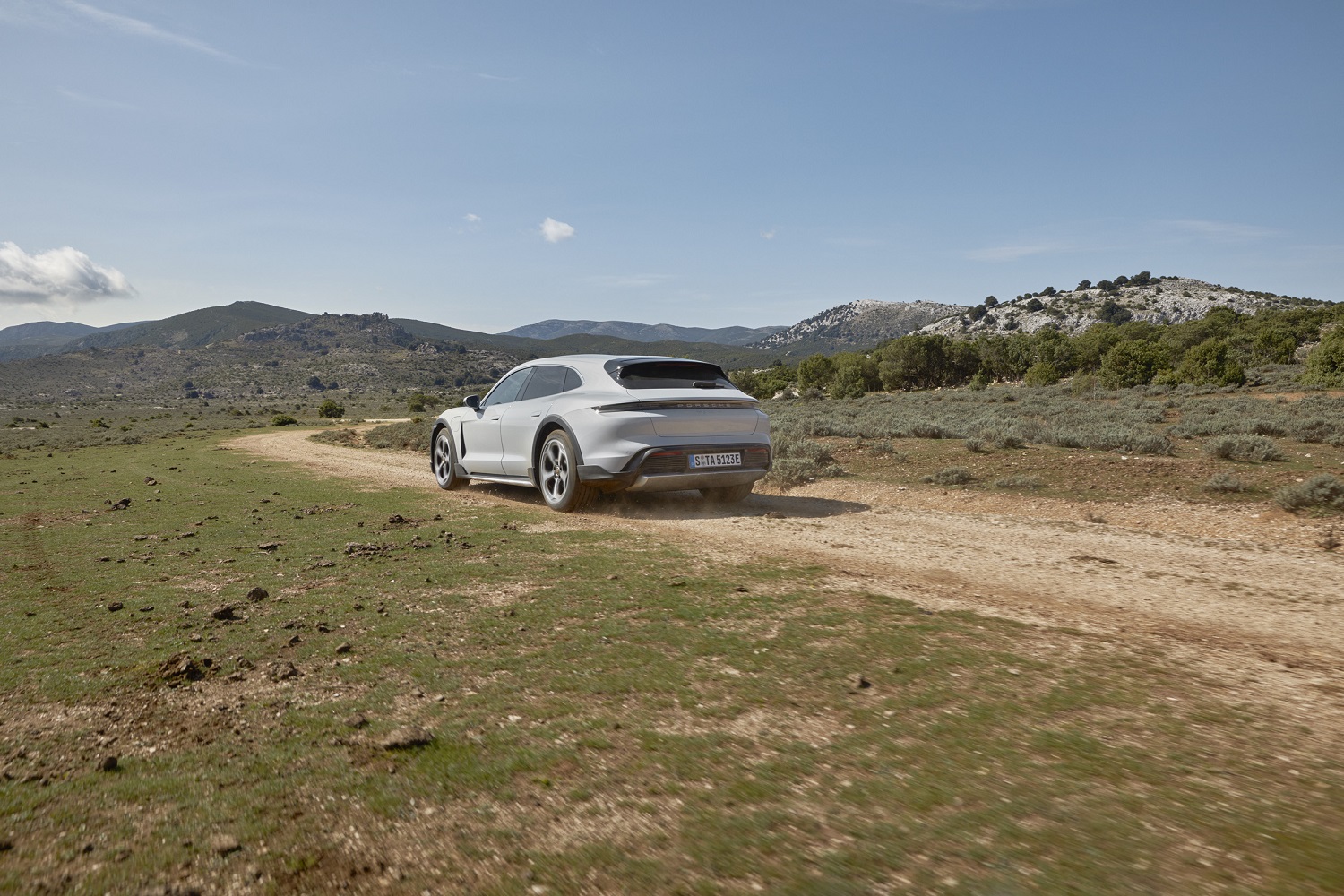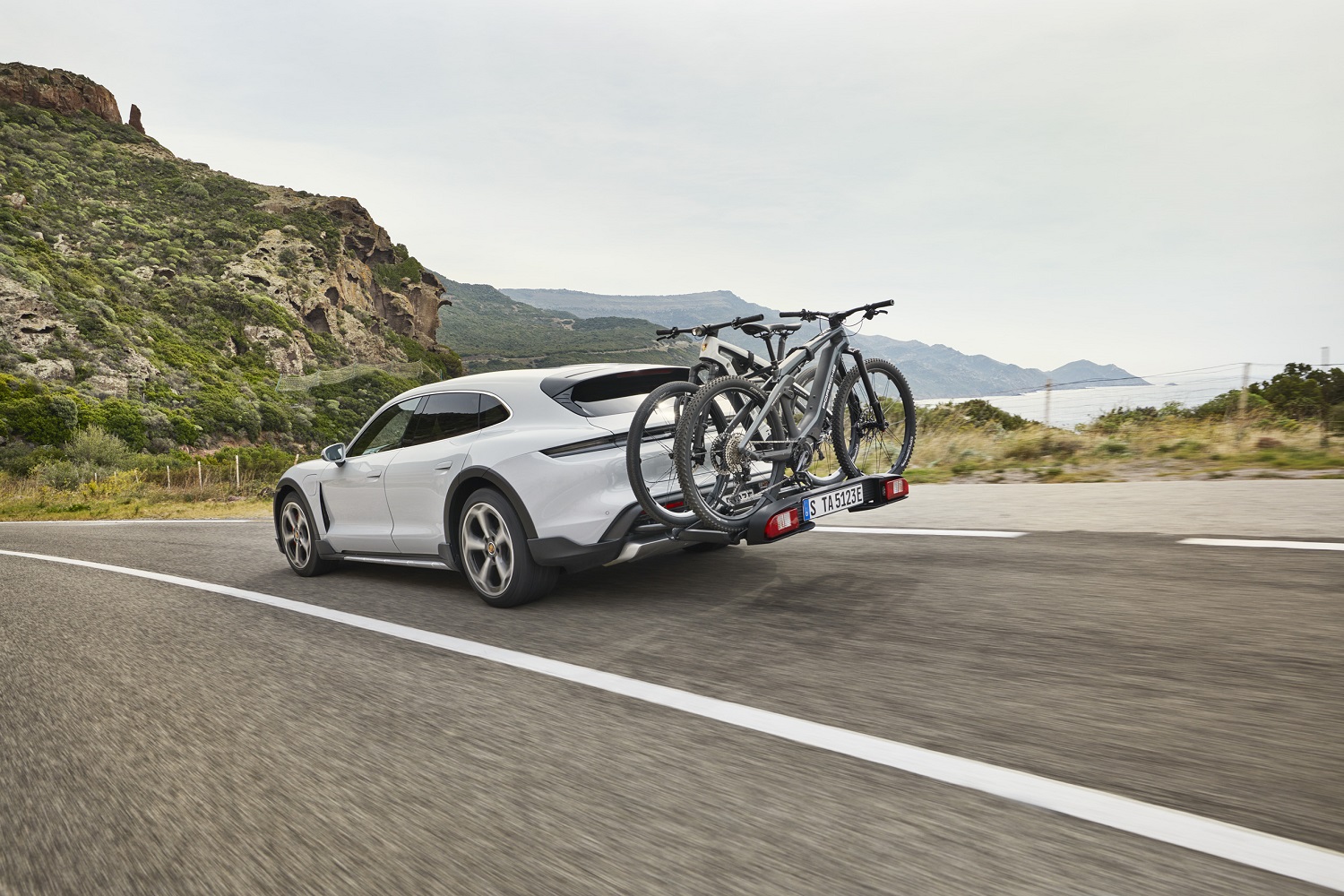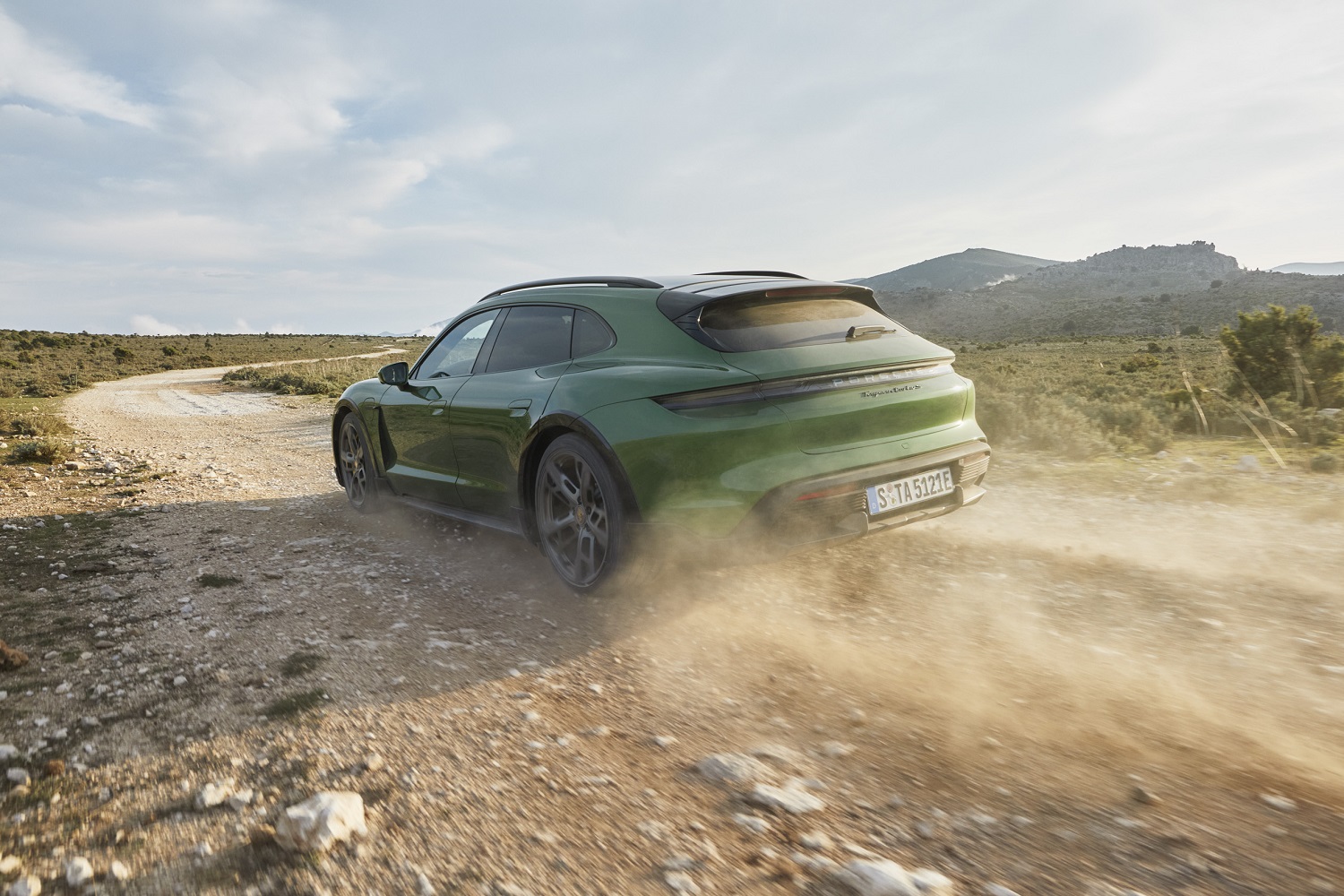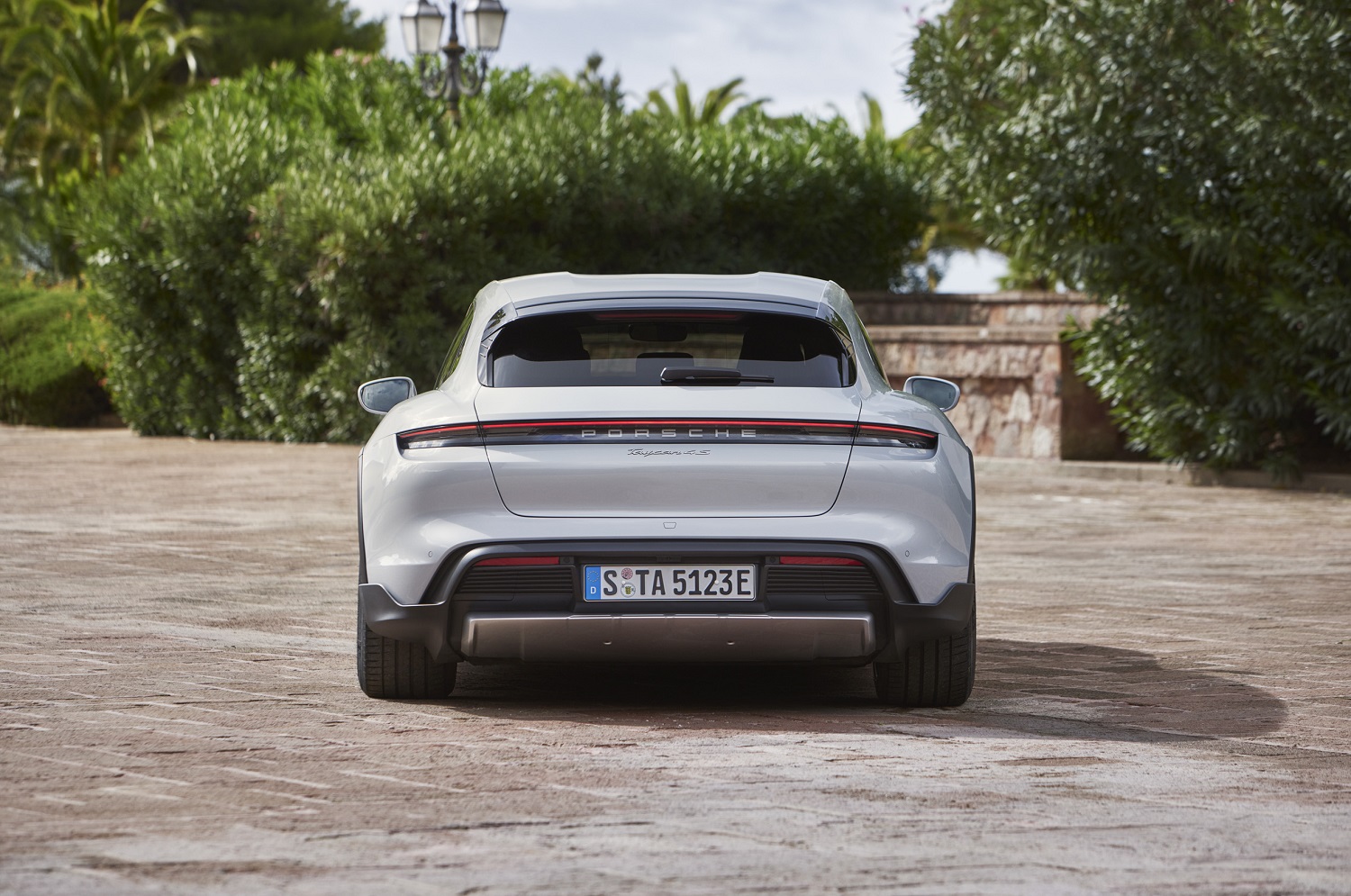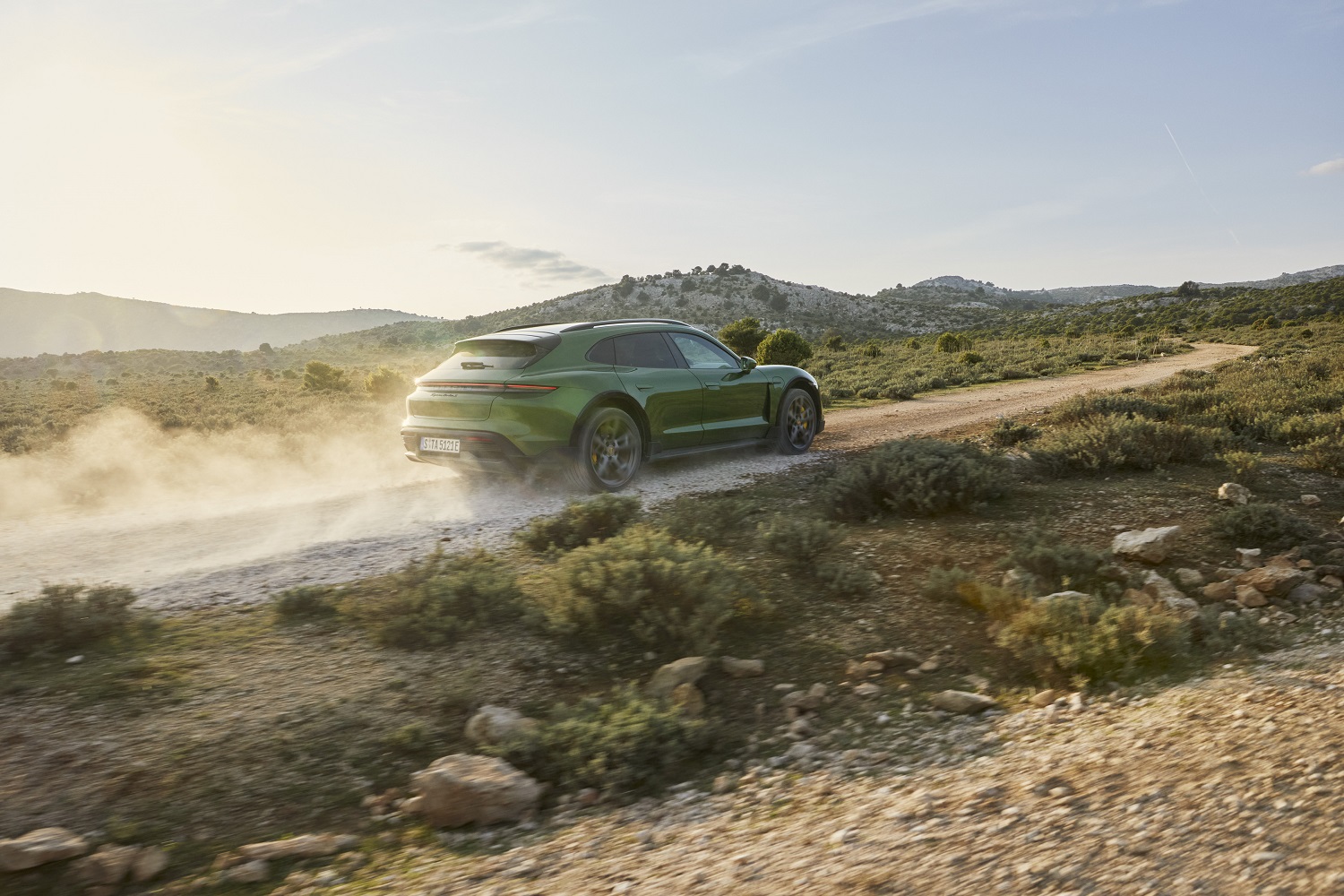Porsche turned the Taycan, its first series-produced electric car, into a zero-emissions station wagon named Cross Turismo. The model blends the heart of a battery-powered sports sedan with the personality of a rugged SUV.
Previewed by the 2019 Mission E Cross Turismo, the second wagon in the Porsche range (after the mighty Panamera) has changed little in its transition from a concept to a production car. It shares its basic front-end design with the Taycan sedan, no one is going to mistake it for anything other than a Porsche, but it gains a longer and flatter roof line that clears up nearly four additional inches of headroom for the rear passengers. Trunk space checks in at up to 15.7 cubic feet with a full load of passengers on board, and 42.8 cubes with the rear seats folded flat.
Stylists added outdoorsy flair to the Cross Turismo by fitting it with cladding over the wheel arches and the rocker panels, while modifications made to the adjustable air suspension system give the wagon nearly an inch of additional ground clearance. It’s certainly not a full-blown off-roader, but it’s more comfortable exploring dirt roads than its lower-riding counterpart. Ordering the Off-Road Design Package increases ground clearance by another half an inch.
Off the beaten path, motorists can engage a driving mode called Gravel that automatically adjusts the suspension firmness, the traction and stability control systems, and the torque management system to ensure the Cross Turismo doesn’t lose grip. Back on the asphalt, the wagon hits 60 mph from a stop in 2.7 seconds in its quickest configuration — it’s a Porsche, after all. That’s only a tenth of a second slower than the more aerodynamic Taycan sedan.
We called Porsche’s first EV its most high-tech model to date in 2020, and the Cross Turismo receives the same set of features. It has a curved, 16.8-inch digital instrument cluster with individual gauges that can be configured using buttons on the steering wheel. There’s a 10.9-inch touchscreen for the infotainment system, an 8.4-inch screen with additional functions right below it, and a fourth screen on the right side of the dashboard, though it can only be used when the car detects someone is sitting in the passenger seat. Apple CarPlay compatibility is available, too.
Buyers will have four variants to choose from: The Taycan 4 Cross Turismo, Taycan 4S Cross Turismo, Taycan Turbo Cross Turismo, and Taycan Turbo S Cross Turismo. All four will come with dual-motor all-wheel-drive, a two-speed automatic transmission (which is unusual in the EV world), an adjustable air suspension system, and an 800-volt electrical system that enables ultra-quick charging times when the car draws juice from a compatible charger.
Pricing for the Taycan Cross Turismo starts at $90,900 before a mandatory $1,350 destination charge (which is like shipping and handling for cars) elbows its way into the equation. Deliveries will start in the summer of 2021.

